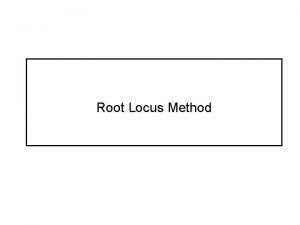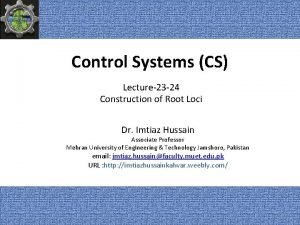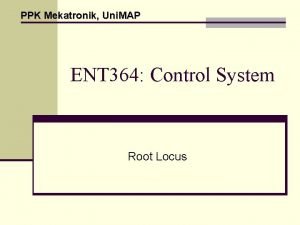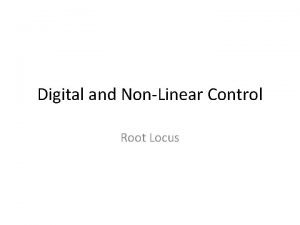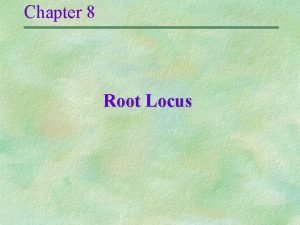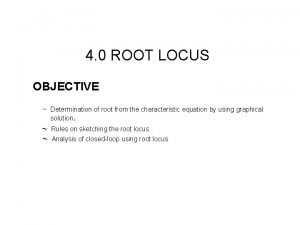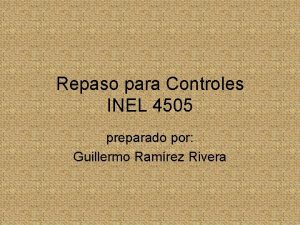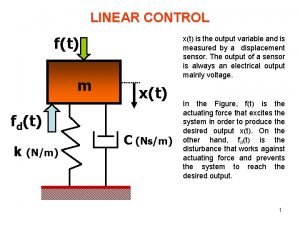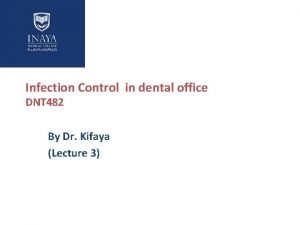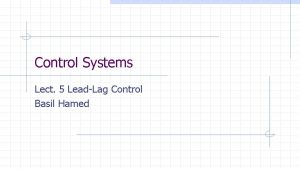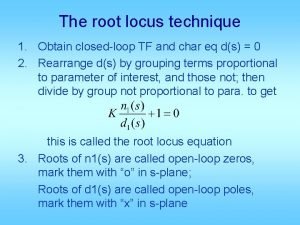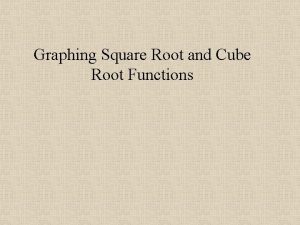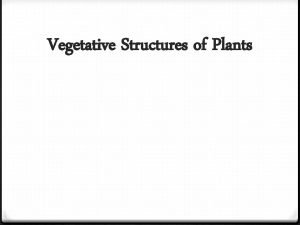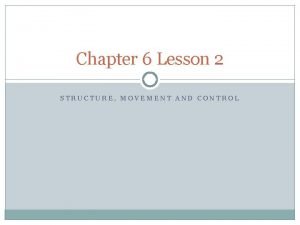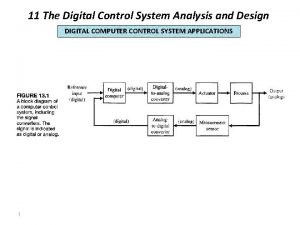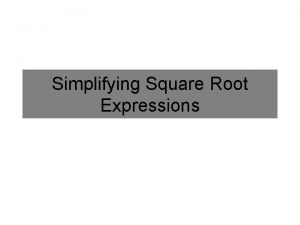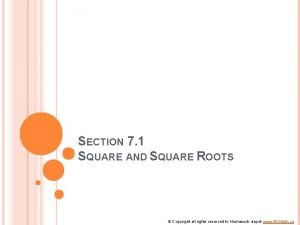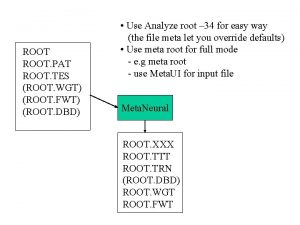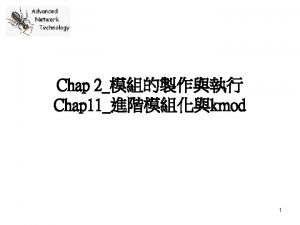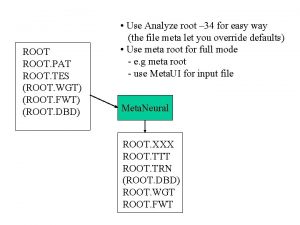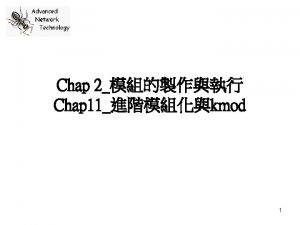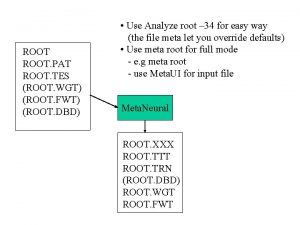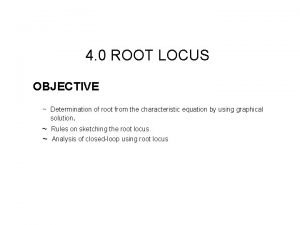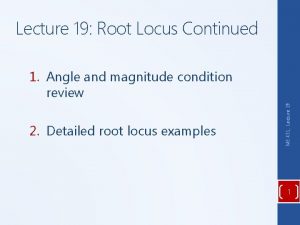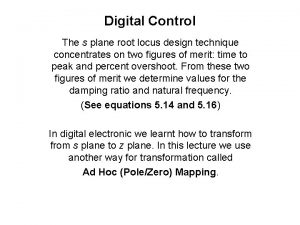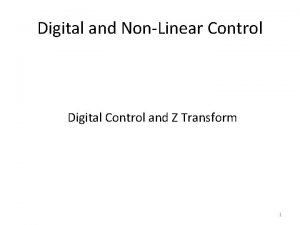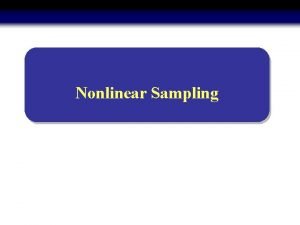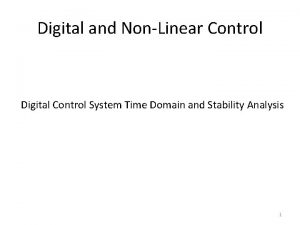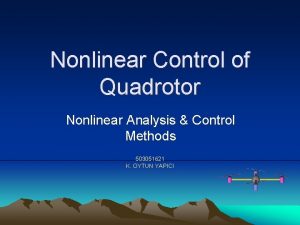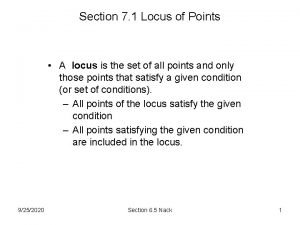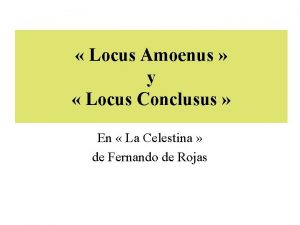Digital and NonLinear Control Root Locus Outline Introduction









































- Slides: 41

Digital and Non-Linear Control Root Locus

Outline • • Introduction Angle and Magnitude Condition Construction of Root Loci Examples

Introduction • Consider a unity feedback control system shown below. • The open loop transfer function G(s) of the system is • And the closed transfer function is

Introduction • Location of closed loop Pole for different values of K (remember K>0). K 0. 5 1 2 Pole -1. 5 -2 -3 3 5 10 15 -4 -6 -11 -16

What is Root Locus? • The root locus is the path of the roots of the characteristic equation traced out in the s-plane as a system parameter varies from zero to infinity.

How to Sketch root locus? • One way is to compute the roots of the characteristic equation for all possible values of K. K 0. 5 1 2 Pole -1. 5 -2 -3 3 5 10 15 -4 -6 -11 -16

How to Sketch root locus? • Computing the roots for all values of K might be tedious for higher order systems. K 0. 5 1 2 Pole ? ? ? 3 5 10 15 ? ?

Construction of Root Loci • Finding the roots of the characteristic equation of degree higher than 3 is laborious and will need computer solution. • A simple method for finding the roots of the characteristic equation has been developed by W. R. Evans and used extensively in control engineering. • This method, called the root-locus method, is one in which the roots of the characteristic equation are plotted for all values of a system parameter.

Construction of Root Loci • The roots corresponding to a particular value of this parameter can then be located on the resulting graph. • By using the root-locus method the designer can predict the effects on the location of the closed-loop poles of varying the gain value or adding open-loop poles and/or open-loop zeros.

Angle & Magnitude Conditions • In constructing the root loci angle and magnitude conditions are important. • Consider the system shown in following figure. • The closed loop transfer function is

Construction of Root Loci • The characteristic equation is obtained by setting the denominator polynomial equal to zero. • Or • Since G(s)H(s) is a complex quantity it can be split into angle and magnitude part.

Angle & Magnitude Conditions • The angle of G(s)H(s)=-1 is • Where k=1, 2, 3… • The magnitude of G(s)H(s)=-1 is

Angle & Magnitude Conditions • Angle Condition • Magnitude Condition • The values of s that fulfill both the angle and magnitude conditions are the roots of the characteristic equation, or the closed-loop poles.

Construction of root loci • Step-1: The first step in constructing a root-locus plot is to locate the open-loop poles and zeros in s-plane.

Construction of root loci • Step-2: Determine the root loci on the real axis. • To determine the root loci on real axis we select some test points. • e. g: p 1 (on positive real axis). p 1 • The angle condition is not satisfied. • Hence, there is no root locus on the positive real axis.

Construction of root loci • Step-2: Determine the root loci on the real axis. • Next, select a test point on the negative real axis between 0 and – 1. • Then • Thus • The angle condition is satisfied. Therefore, the portion of the negative real axis between 0 and – 1 forms a portion of the root locus. p 2

Construction of root loci • Step-2: Determine the root loci on the real axis. • Now, select a test point on the negative real axis between -1 and – 2. • Then • Thus • The angle condition is not satisfied. Therefore, the negative real axis between -1 and – 2 is not a part of the root locus. p 3

Construction of root loci • Step-2: Determine the root loci on the real axis. • Similarly, test point on the negative real axis between -2 and – ∞ satisfies the angle condition. p 4 • Therefore, the negative real axis between -2 and – ∞ is part of the root locus.

Construction of root loci • Step-2: Determine the root loci on the real axis.

Construction of root loci • Step-3: Determine the asymptotes of the root loci. That is, the root loci when s is far away from origin. Asymptote is the straight line approximation of a curve Actual Curve Asymptotic Approximation

Construction of root loci • Step-3: Determine the asymptotes of the root loci. • where • n-----> number of poles • m-----> number of zeros • For this Transfer Function

Construction of root loci • Step-3: Determine the asymptotes of the root loci. • Since the angle repeats itself as k is varied, the distinct angles for the asymptotes are determined as 60°, – 60°, and 180°.

Construction of root loci • Step-3: Determine the asymptotes of the root loci. • Before we can draw these asymptotes in the complex plane, we need to find the point where they intersect the real axis. • Point of intersection of asymptotes on real axis (or centroid of asymptotes) is

Construction of root loci • Step-3: Determine the asymptotes of the root loci. • For

Construction of root loci • Step-3: Determine the asymptotes of the root loci.

Construction of root loci • Step-4: Determine the breakaway/break-in point. • The breakaway/break-in point is the point from which the root locus branches leaves/arrives real axis.

Construction of root loci • Step-4: Determine the breakaway point or break-in point. • The breakaway or break-in points can be determined from the roots of (page 275) • It should be noted that not all the solutions of d. K/ds=0 correspond to actual breakaway points. • If a point at which d. K/ds=0 is on a root locus, it is an actual breakaway or break-in point.

Construction of root loci • Step-4: Determine the breakaway point or break-in point. • The characteristic equation of the system is • The breakaway point can now be determined as

Construction of root loci • Step-4: Determine the breakaway point or break-in point. • Set d. K/ds=0 in order to determine breakaway point.

Construction of root loci • Step-4: Determine the breakaway point or break-in point. • Since the breakaway point needs to be on a root locus between 0 and – 1, it is clear that s=– 0. 4226 corresponds to the actual breakaway point. • Point s=– 1. 5774 is not on the root locus. Hence, this point is not an actual breakaway or break-in point.

Construction of root loci • Step-4: Determine the breakaway point.

Construction of root loci • Step-4: Determine the breakaway point.

Construction of root loci • Step-5: Determine the points where root loci cross the imaginary axis.

Construction of root loci • Step-5: Determine the points where root loci cross the imaginary axis. • Let s=jω in the characteristic equation, equate both the real part and the imaginary part to zero, and then solve for ω and K. • For present system the characteristic equation is

Construction of root loci • Step-5: Determine the points where root loci cross the imaginary axis. • Equating both real and imaginary parts of this equation to zero • Which yields



Example • Determine the Breakaway and breakin points

Solution • Differentiating K with respect to s and setting the derivative equal to zero yields; Hence, solving for s, we find the break-away and break-in points s = -1. 45 and 3. 82

Solution -1. 45 3. 82

Root Loci by MATLAB • Example 6 -4 in page 293
 Define root locus
Define root locus Construction of root loci
Construction of root loci Ent mekatronik
Ent mekatronik Angle and magnitude condition of root locus
Angle and magnitude condition of root locus Departure angle root locus
Departure angle root locus Root locus plotter
Root locus plotter Root locus departure angle
Root locus departure angle Locus rule
Locus rule Lag lead compensator in control system
Lag lead compensator in control system Root locus definition
Root locus definition Breakaway
Breakaway Standard 3 infection control
Standard 3 infection control Root locus examples
Root locus examples Root-locus techniques
Root-locus techniques Root-locus techniques
Root-locus techniques Arteria epigastrica superficialis
Arteria epigastrica superficialis Social cognitive theory
Social cognitive theory Julian rotter locus of control
Julian rotter locus of control Schneiderman 8 golden rules
Schneiderman 8 golden rules Introduction to analog and digital control systems
Introduction to analog and digital control systems Introduction to digital control system
Introduction to digital control system Pipeline is a linear.
Pipeline is a linear. Sandwich paragraph example
Sandwich paragraph example Introduction to nonlinear analysis
Introduction to nonlinear analysis Pine leaves
Pine leaves Graphing square and cube root functions
Graphing square and cube root functions What are the main parts of flowering plants
What are the main parts of flowering plants Ventral root and dorsal root
Ventral root and dorsal root Ventral root
Ventral root Support control and movement lesson outline
Support control and movement lesson outline Structure movement and control
Structure movement and control Digital markets and digital goods
Digital markets and digital goods Whats a digital footprint
Whats a digital footprint Digital topic outline
Digital topic outline Digital control system application
Digital control system application Square root of 72 simplified
Square root of 72 simplified Bound root
Bound root Square 1 to 25
Square 1 to 25 Carpe diem locus amoenus
Carpe diem locus amoenus Focalización interna ejemplos
Focalización interna ejemplos Locus of corruption
Locus of corruption Compound locus
Compound locus
